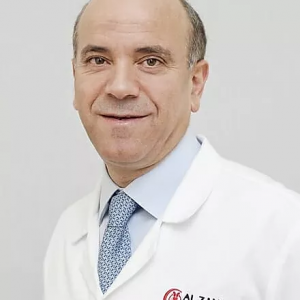Leukoplakia Excision Surgery
This involves surgically removing tissue from the leukoplakia patch or removing the entire patch if it’s small. An excision biopsy is more comprehensive and usually results in a definitive diagnosis. … Read More
Top Doctors For Leukoplakia Excision Surgery Treatments
Top Hospitals For Leukoplakia Excision Surgery Treatments
Leukoplakia Excision Surgery
- Examining the patches in the mouth.
- Attempting to scrape off the white patches.
- Review and discussion of your medical history and risk factors.
- Ruling out other possible causes, such as cancer.
- Oral brush biopsy: The removal of cells from the surface of the lesions with a small, spinning brush. This procedure is non-invasive, and not a definitive diagnosis.
- Excisional biopsy: This is the surgical removal of tissues from the leukoplakia patch or removal of the entire patch if it’s small. An excisional biopsy is more comprehensive and usually gives a definitive diagnosis.
- Removal of leukoplakia patches: This may be done with a scalpel, a laser or an extremely cold probe (a cryoprobe) which freezes and destroys cancer cells.
- Follow-up visits for check-ups on the area: Recurrences are common with leukoplakia it once had. Therefore, one must always go for the check to ensure recurrence is not taking place.
- Medication: Systemic medication, a pill that affects the whole body system, such as antiviral medications may be prescribed. These medications suppress the Epstein-Barr virus that causes hairy leukoplakia. Topical treatment may also be prescribed.
- Follow-up visits: The white patches of hairy leukoplakia may return once treatment stops. Therefore, regular follow-up visits are recommended to monitor changes in the mouth or ongoing therapy to prevent leukoplakia patches from returning.
Symptoms
The presence of white or gray colored patches on your tongue, gums, roof of your mouth, or the inside of the cheeks of your mouth may be a sign of leukoplakia. The patch may have developed slowly over weeks to months and be thick, slightly raised, and may eventually take on a hardened and rough texture.
ukoplakia symptoms may appear as;
- White or greyish patches, which can't be wiped away.
- Thickened or hardened areas in the mouth.
- Raised, red lesions (known as speckled leukoplakia or erythroplakia), which may possibly show precancerous changes.
For hairy leukoplakia symptoms;
Hairy leukoplakia usually causes vague, white patches resembling folds or ridges, on the sides of the tongue.
This should not be mistaken for oral thrush whose patches are creamy white and can be wiped away, and also common in people with a weakened immune system
Causes
• Irritation from rough teeth, fillings, or crowns, or ill-fitting dentures that rub against your cheek or gum.
• Chronic smoking, pipe smoking, or other tobacco use.
• Sun exposure to the lips.
• Oral cancer (although rare)
• HIV or AIDS.
FAQ
What are the complications associated with leukoplakia?
Leukoplakia doesn't usually cause any permanent damage to the tissues of the mouth. However, leukoplakia may increase the risk of oral cancer, which often forms near leukoplakia patches. Leukoplakia patches themselves may also show cancerous changes. And even after leukoplakia patches have been removed, the risk of oral cancer still remains.
As for hairy leukoplakia, it isn't likely to lead to any form of cancer. But it may be an indication of HIV/AIDS.
How can I prevent leukoplakia?
Avoid all tobacco products and alcohol use.
Frequent dental check-ups.
Quit tobacco smoking and alcohol consumption.
As for hairy leukoplakia, prevention may not be possible if the immune system is already weakened. However, early detection helps with prompt and appropriate treatment.
What are the risk factors for leukoplakia?
The following may increase the risk of leukoplakia
- Tobacco use, particularly smokeless tobacco. Ii is also a risk factor for oral cancer.
- Long-term alcohol use.
- Combined drinking alcohol and smoking increases the risk even more.
For hairy leukoplakia
- Epstein-Barr virus (EBV) is probably the single biggest risk factor.
- People with HIV/AIDS are also likely to develop leukoplakia.
Does oral leukoplakia increase my risk of oral cancer?
Yes. Oral leukoplakia is classified as precancerous. That is, can lead to cancer.
What type of oral cancer do people with oral leukoplakia develop?
The most common type of oral cancer that oral leukoplakia may lead to is oral squamous cell carcinoma.
Does oral leukoplakia cause any discomfort?
Normally, oral leukoplakia is not discomforting, and in many cases may be completely asymptomatic. However, in certain cases, it may cause some level of discomfort, such as sensitivity to spicy or acidic foods.
What are the necessary lifestyle changes that reduce the risk of leukoplakia?
The following lifestyle changes may likely reduce the risk of leukoplakia
- Quit tobacco, betel nut, and gutka use.
- Quit alcohol consumption.
- Increase consumption of fruits and vegetables.
































































































